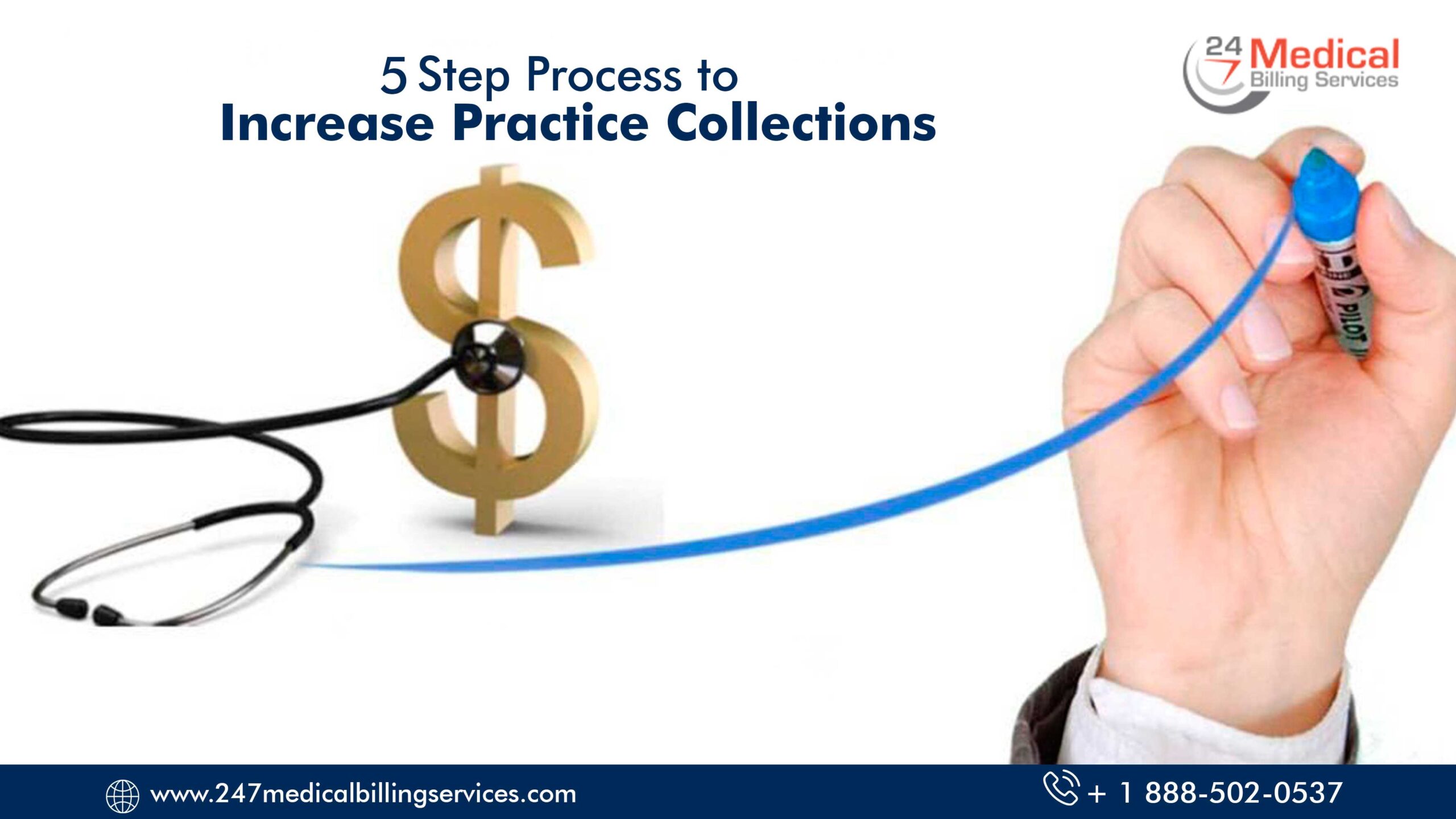
5 Step Process to Increase Practice Collections
These are the crucial times where providers need to give more attention to patient collection and balances since there is now a situation with more financial responsibility from insured patients. This is a direct impact of high dollar deductible health plans related to health saving accounts or tax-advantaged medical savings accounts.
Proven patient collection strategies are about the basic concept of good communication and education of medical debt owed. These strategies for patient collection are meant to solve one of the greatest challenges that patient collection costs two to three times as much to collect from patients as it does to collect from payers. Hence, practices need to avoid costly measures that result in ineffective statements and calls that don’t pay off.
This Article Talks About 5 Ways to Increase Patient Payments and Boost Practice Revenue
Patient payments are an important element of every practice's revenue cycle management, but when patients avoid taking financial responsibility, practitioners and their practices take a hard hit. According to a report from the American Hospital Association, US hospitals have provided more than $502 billion in uncompensated care expenses since 2000. More patients are spending more out-of-pocket costs for medical care expenses than ever. Let's see 5 ways your practice can increase patient payments that boost your practice's revenue.
- Patient Statements & Collection Notices Design
Neatly designed patient statements and information need to clearly mention the balance due for medical services. The details about an effective statement should clearly inform the patient not only of the balance due but also, the important information regarding the services performed, provider of services, charges of services, payer payments, and adjustments, along with contact name, address, and contact number for statement inquiries. Many statements sent to the patients lack the information for the patient to understand the charges they are being asked to pay. Your practice may stand a better chance of getting a patient to respond if they understand how they relate to the services performed.
- Point of Service (POS) Collections
Another most effective time to collect money to meet the financial responsibility of the patient is at the time of service. The staff registering patients need to have deep knowledge and skills to understand and communicate to the patient the due amount for the services they are getting. Registration staff should perform well by taking patient demographic information along with understanding and communicating the financial responsibility of the patient based on the services rendered. (Note: the practice owners that implement POS collections are more successful in collections when the provider performs the registration).
- Payment Arrangement Policy
Payment policies matter. When practice allows patients to opt for an option to make time-based payments or discounted amounts may motivate the responsible party to pay the debt which otherwise would go unpaid. This is specifically necessary while working with uninsured or underinsured patients. Many times, time-based arrangements are allowed through a structured plan when the patients call to inquire about their accounts. The provider’s payment arrangement policy should be generously disclosed at the time the services are rendered and through other clear written and verbal communications.
- Patient Follow-up Programs
Patient follow-up programs are more than the traditional written communication; they have action steps to actively reach out to the patient/guarantor. Successful programs give priority to patient follow-ups based on an algorithm of elements that help the patient to consider their propensity to pay; hence, identifying where follow-up efforts should be focused. For standard practices, these follow-ups generally happen once a month through phone calls and emails.
- Online Patient Portals
Offering patients an easy way to pay bills via any form of the online portal is an acceptable practice and rapidly becoming a general practice. Providing payment options as a portal and using current technology is attractive to all patients, but particularly, to younger generations. Just like we talked about the patient statements, it is necessary to have user-friendly online patient portals that offer the patient deep information about the nature of their bill. Another crucial part here to note is the importance of using a patient portal that follows the highest standards of security, to protect your patient’s information and to meet HIPAA compliance requirements.
End to end billing and coding solution from 24/7 Medical Billing Services
Get more from your revenue cycle
Integrated solutions from 24/7 Medical Billing Services bring together useful data, smart claim handling, and performance consulting to guarantee cost optimization by 50%.
For more information, visit www.247medicalbillingservices.com and enroll for a free consultation. Let’s discuss how we can increase practice collections for your practice.
Read More : How Outsourcing Helped This Practice In Ohio Focus More On Patient Care

.png)